Nothing enhances a home-cooked meal like a pinch of fresh herbs. Basil, mint, parsley, and rosemary not only add irresistible flavor but also bring a touch of green, fresh fragrance, and natural beauty to your home. But what if your kitchen or apartment lacks direct sunlight?
Good news: You can still grow herbs indoors without sunlight! Thanks to modern tools like grow lights and smart planting techniques, it’s entirely possible to cultivate lush, aromatic herbs in shady spots or even windowless corners.
In this guide, we’ll explain how to successfully grow herbs indoors without natural sunlight — from choosing the right herbs and lighting solutions to proper care and harvesting tips.
Can You Grow Herbs Indoors Without Sunlight?
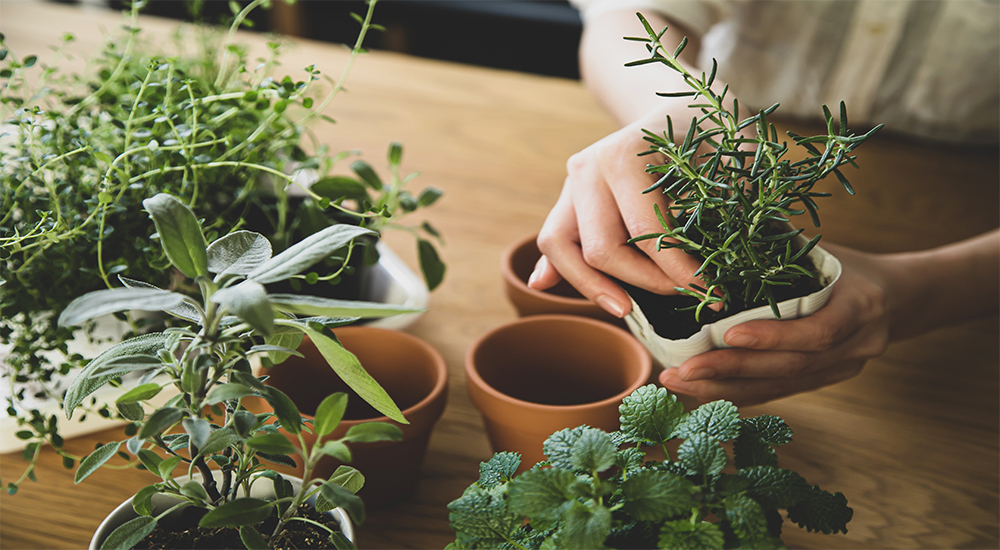
Yes — while most herbs traditionally thrive in sunlight, many can adapt well to artificial light sources or shaded indoor environments if cared for properly. The key is providing adequate light, moisture, and nutrients to mimic outdoor growing conditions.
Modern grow lights, reflective surfaces, and well-planned plant placement allow you to grow a healthy, productive indoor herb garden no matter how little natural light your home gets.
Best Herbs to Grow Indoors Without Sunlight
Not all herbs tolerate shade equally. Some are naturally more adaptable to low-light conditions or artificial lighting.
Top Herbs for Low-Light and Indoor Spaces:
- Mint: Hardy, fast-growing, and tolerant of partial shade.
- Parsley: Does well under grow lights or indirect lighting.
- Cilantro (Coriander): Thrives in cooler, low-light environments.
- Chives: Easy to grow indoors with minimal light.
- Lemon Balm: Aromatic and shade-tolerant.
- Thyme: Adapts to filtered light or artificial sources.
- Oregano: Happy with partial light or grow lights.
- Chervil: Prefers indirect light and cooler indoor spots.
Note: Herbs like basil and rosemary typically require brighter conditions but can still thrive under strong grow lights.
1. Choose the Right Containers
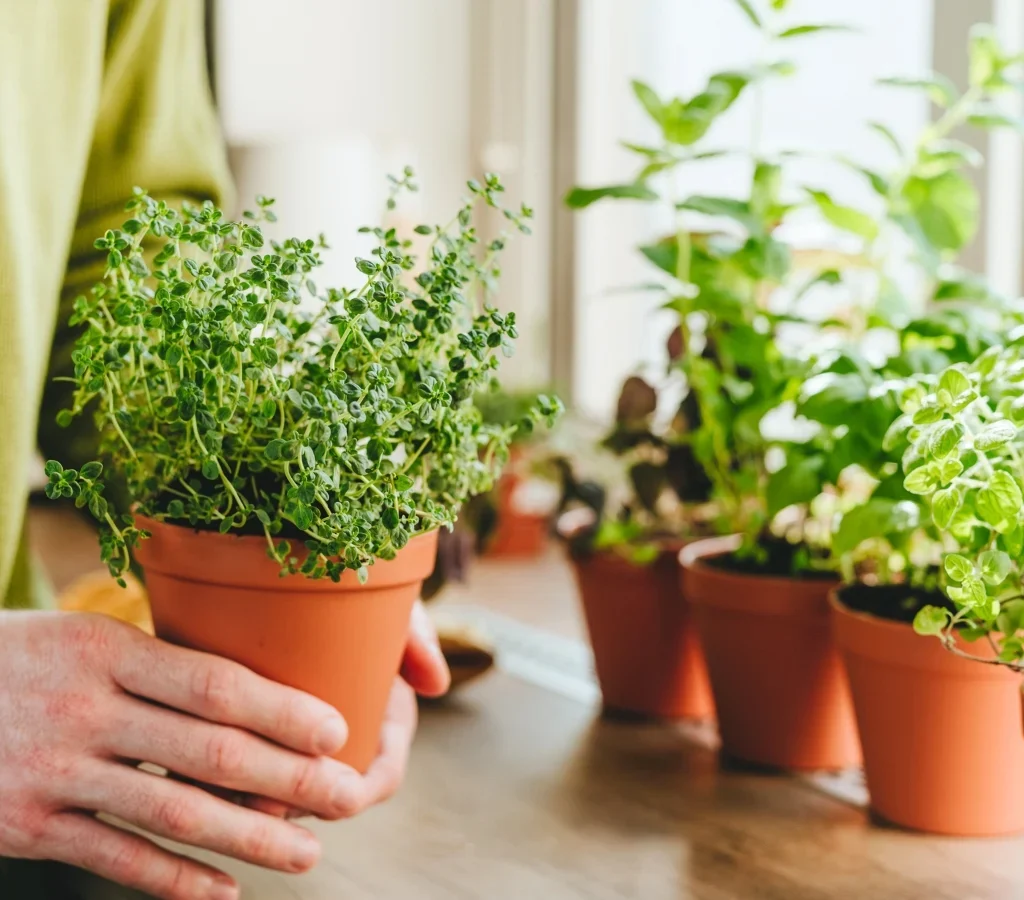
Indoor herbs need containers with good drainage to avoid waterlogged roots.
Best container choices:
- Small ceramic, terracotta, or plastic pots.
- Containers with drainage holes.
- Window boxes (with artificial light above).
Tip: Use saucers to catch excess water and protect surfaces.
2. Select Quality Potting Mix
Use a lightweight, well-draining potting mix formulated for indoor or container plants. Avoid garden soil as it can compact and harbor pests indoors.
Optional Additions:
- Perlite or vermiculite for improved aeration.
- Organic compost for extra nutrients.
3. Install Grow Lights for Indoor Herbs
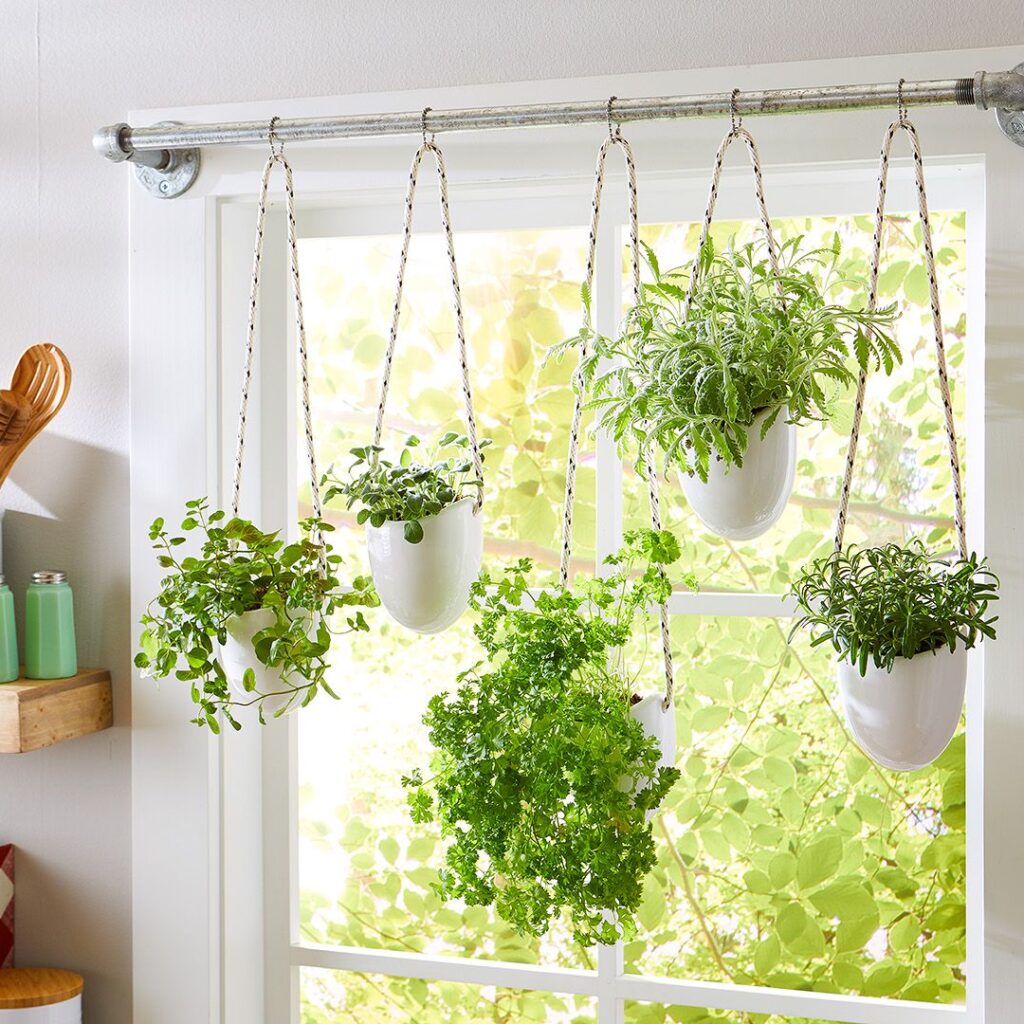
If your home lacks sunlight, grow lights are the most reliable way to grow healthy herbs indoors.
Types of Grow Lights:
- Fluorescent lights (T5 or T8): Affordable, cool, and perfect for herbs.
- LED grow lights: Energy-efficient, long-lasting, and customizable light spectrums.
- Full-spectrum lights: Mimic natural sunlight with balanced red, blue, and white wavelengths.
Light Duration:
Most indoor herbs need 12–16 hours of light daily for healthy growth. Use an automatic timer for consistent cycles.
4. Place Plants Strategically
If possible, place your herbs:
- Near bright windows with filtered light.
- Under grow lights hung 6–12 inches above plants.
- In reflective spaces (use light-colored or mirrored surfaces to bounce light).
Rotate plants every few days to encourage even growth.
5. Water and Humidity Care
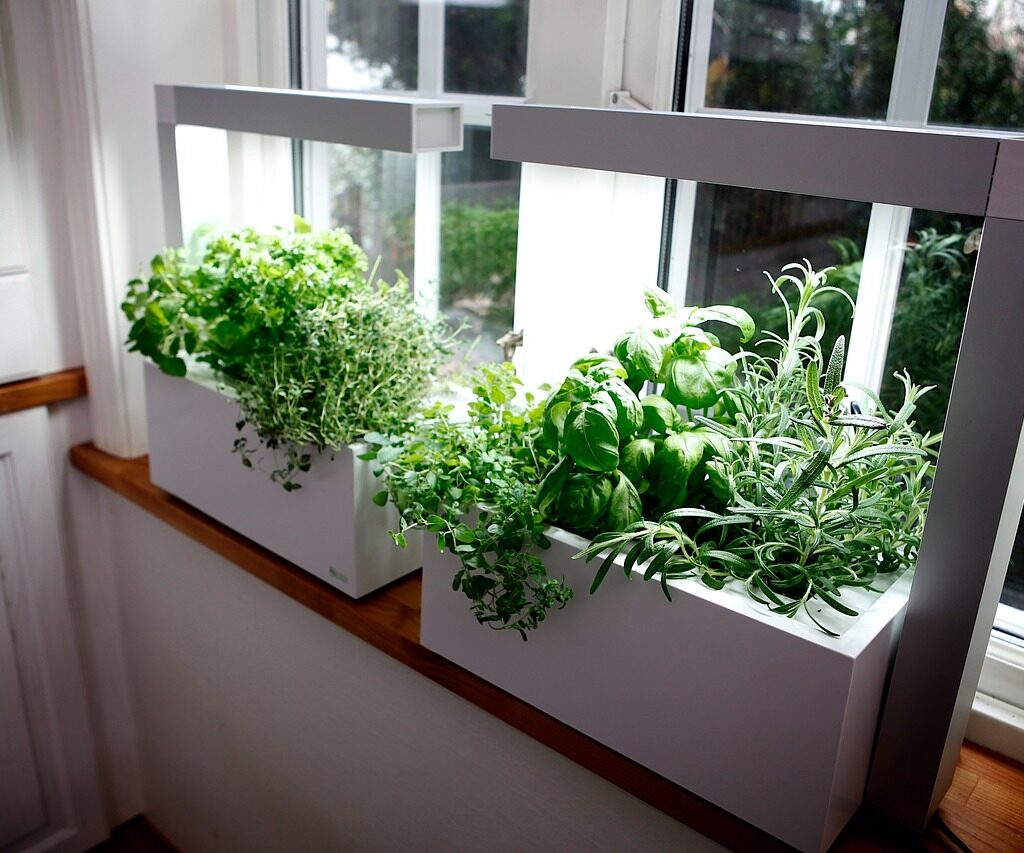
Indoor air tends to be dry, especially with heaters or air conditioners running. Herbs generally prefer slightly moist soil and moderate humidity.
Watering Tips:
- Check soil moisture with your finger.
- Water when the top 1 inch feels dry.
- Avoid overwatering — herbs hate soggy roots.
Humidity Boosters:
- Group plants together.
- Place a water tray near the plants.
- Mist plants occasionally.
- Use a small indoor humidifier in dry rooms.
6. Feed Your Herbs Naturally
Without natural soil microorganisms, potted herbs need extra nutrients.
Best Fertilizers for Indoor Herbs:
- Organic liquid fertilizers (diluted to half-strength)
- Fish emulsion or seaweed extract
- Compost tea (gentle, natural nutrient boost)
Feed once every 2–4 weeks during active growth, less in winter when plants slow down.
7. Regular Pruning and Harvesting
Pruning keeps herbs bushy and encourages fresh growth.
How to Harvest:
- Use sharp, clean scissors.
- Snip off top leaves first.
- Never remove more than one-third of the plant at a time.
Bonus Tip: Regular harvesting prevents herbs like mint or basil from becoming leggy.
8. Control Pests Naturally
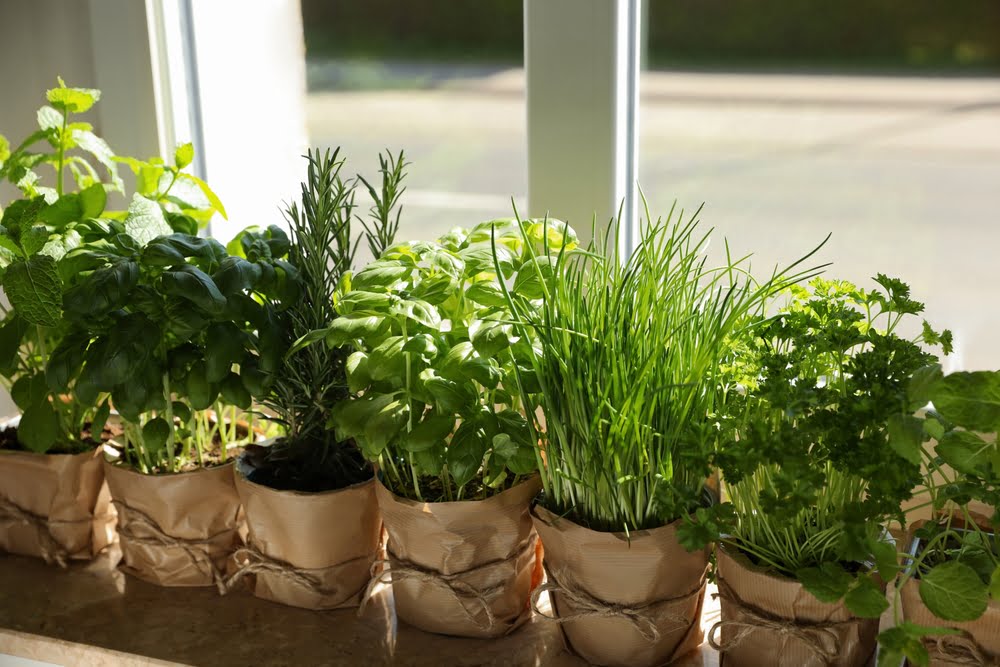
Even indoor herbs can attract pests like aphids, spider mites, and whiteflies.
Natural Pest Control:
- Wipe leaves with soapy water.
- Spray with neem oil (safe for edible plants).
- Introduce beneficial insects like ladybugs, if possible.
Inspect plants weekly for early signs of trouble.
9. Repot When Needed
Herbs grow quickly and may outgrow their containers. Repot when:
- Roots appear at drainage holes.
- Growth slows or leaves yellow.
Use fresh potting mix and a slightly larger container for best results.
Bonus: Compact Indoor Herb Garden Ideas
- Hanging herb planters: Space-saving and decorative.
- Vertical wall planters: Great for kitchens and balconies.
- Mason jar herb garden: Stylish and compact for countertops.
- Hydroponic indoor herb kits: No soil required, perfect for beginners.
Popular Indoor Herb Combinations
For flavor-packed, easy-to-care-for mini gardens, try these pairings:
- Italian Kitchen Garden: Basil, Oregano, Parsley, Thyme
- Tea Garden: Mint, Lemon Balm, Chamomile
- Garnish Garden: Chives, Cilantro, Dill, Parsley
Final Thoughts
Even without sunlight, you can enjoy the convenience, flavor, and fragrance of fresh herbs indoors. With quality grow lights, the right plant choices, and thoughtful care, your indoor herb garden can flourish year-round — whether on a shady windowsill, balcony corner, or kitchen counter.
No sunlight? No problem. Indoor gardening is all about creative solutions, and growing herbs without natural light is easier than ever with today’s tools and techniques. So, grab those mint cuttings and basil seeds, set up your grow lights, and turn any corner of your home into a green, edible retreat.

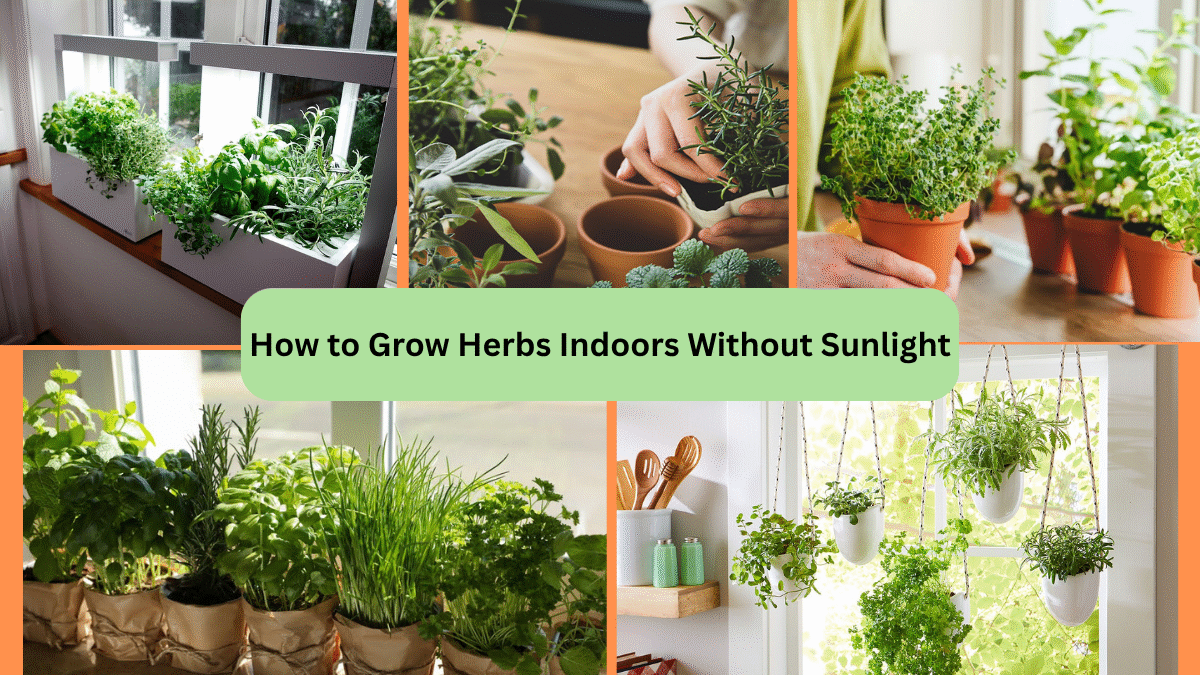

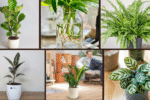

Leave A Comment